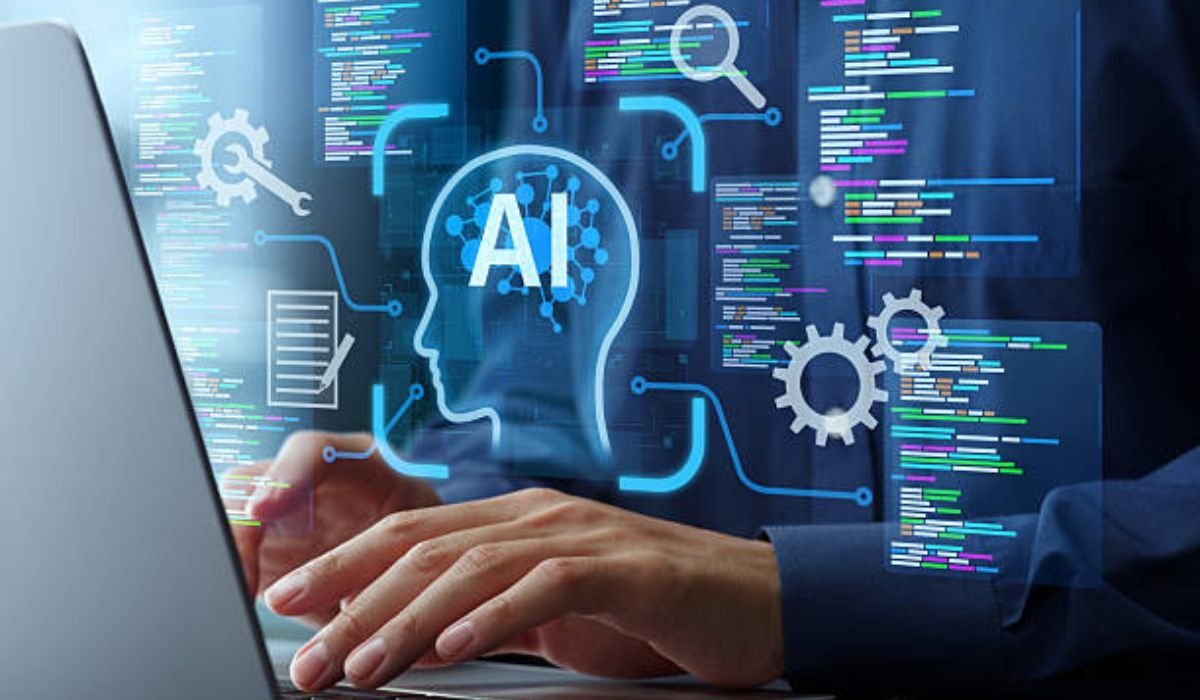With the growing integration of artificial intelligence into software development, AI agent testing is rapidly becoming an indispensable part of keeping pace with the reliability, accuracy, and efficiency of contemporary systems.
As opposed to conventional QA approaches, which depend significantly on manual input or pre-scripted automation, AI agent testing utilizes autonomous, smart agents to run and verify test cases programmatically. These agents are designed to replicate human decision-making, learn adaptively from changing software behaviour, and communicate with one another to accomplish comprehensive test coverage.
Coordinating many smart agents to automate QA opens up new possibilities for continuous and scalable quality assurance in complex or dynamic environments such as microservices, real-time systems, and AI-infused platforms. In addition to improving test speed and coverage, this methodology also enables predictive diagnostics and automatic self-healing systems, a new benchmark for AI software testing.
In this article, we delve into the concepts of AI agent testing, how smart agents work together in automated QA processes, and what it holds for software testing in the future.
Exploring AI Agent Testing in QA
AI agents are a revolutionary change in quality assurance, where intelligent systems are introduced that can function without continuous human interaction. In contrast to conventional test automation, which relies on predefined steps and firm rule sets, autonomous agents can recognise the environment, decide, perform actions, and learn from results as time passes.
In QA, this indicates they can automatically produce and run tests in response to modifications in code, user activity, or past fault tendency. With features like natural language processing, these agents can take user stories or requirements and turn them into executable test cases with reduced scripting.
They provide self-healing properties, modifying test scripts automatically whenever UI components change, thus minimizing maintenance. More significantly, they can identify and figure out failures, rank high-risk areas, and continue to refine their techniques with machine learning.
The result is a QA process that not only is quicker and more responsive but also more closely related to organisation relevance and real-world usage. With software development teams adopting shorter cycle development and increasingly complicated systems, the move from scripted or manual automation to truly independent QA agents is not only desirable but necessary.
Types of Intelligent Agents Used in QA
Reactive Agents- Reactive agents have a very basic stimulus-response operation, with no memory or internal representation of past interactions. In QA, they are perfectly suitable for managing simple, repetitive operations like test environment monitoring, system state checking, or running predefined regression test scripts. For instance, a reactive agent could automatically reboot a crashed server or re-run failed tests upon deployment.
Deliberative Agents- Deliberative agents decide based on reasoning and internal models of the system under test. In QA, they can be employed for model-based or scenario-based testing, where test flows rely on rational planning. Deliberative agents can be used to mimic user paths of navigation, calculate optimal test sequences, and find decision points in software programs, assisting in the detection of more sophisticated bugs.
Learning Agents- Learning agents get better over time through the application of machine learning algorithms to learn from previous experiences. In QA, such agents can sift through past test history to optimize test cases for running, determine commonly failing modules, or determine areas of code that are most likely to have defects. The fact that they can evolve makes them extremely useful in continuous testing for agile and DevOps environments.
Collaborative Multi-Agent Systems- Such systems consist of several cognitive agents working together, sharing data, and dividing tasks to increase efficiency. Cooperative agents in QA can run various components of a large system in parallel, e.g., one agent may run API tests and another agent runs UI tests, coordinating their efforts to acquire complete coverage and quicker execution of tests on distributed systems.
Autonomous Exploratory Agents- Autonomous exploratory agents run without pre-scripted steps, applying methods such as random or smart crawling to engage with applications. For QA, they simulate human testers conducting exploratory testing and tend to discover undocumented behavior or buried bugs in poorly tested regions of the software. These agents find their most valuable use in early-stage development or when there is minimal documentation.
Specialised Agents (Domain-Specific)- Specialised agents are intended for use in particular domains or test needs, like performance, security, or compliance testing. In QA, they apply domain expertise to specific problems; for example, security agents can conduct penetration testing, and performance agents model high-load environments. Their focused effort guarantees complete testing of critical or regulated spaces.
READ ALSO: Best Test Management Tools to Streamline QA in 2025
Architecture of Agent-Based QA Systems
An agent-based QA system architecture has been developed to facilitate autonomous, distributed, and intelligent software testing. It primarily comprises several interacting agents, each with designated testing activities such as test case creation, execution, monitoring, and analysis. These agents can function under centralised, decentralised, or hybrid control structures.
Though a centralised architecture makes management simpler, it also creates a bottleneck as the master controller appoints tasks and coordinates between agents. Whereas decentralized systems permit agents to behave voluntarily and interact with one another. This results in improved scalability and problem endurance at the expense of more complex coordination protocols. Hybrid models compromise between control and flexibility by combining elements of both. Key architectural elements are:
- Agent Communication Layer: Supports agent-to-agent data exchange (e.g., test results, system data).
- Task Orchestrator: Dynamically assigns roles or test scopes based on test needs and agent capabilities.
- Knowledge Base: Holds common information, such as test results, environmental information, and taught behaviours.
- Monitoring and feedback loop: During testing, the monitoring and feedback loop facilitates self-tuning and real-time analysis.
Agents that have well-architected designs can support continuous integration pipelines, extend across environments (such as on-premises, cloud, and containers), and respond to changes in the software being tested. To maintain the integrity and dependability of the QA process, the architecture must also provide for synchronisation, data consistency, and protect relations between agents.
How AI Agents Testing Helps in QA
Accelerated Test Execution- AI QA agents can analyse and run tests on numerous scenarios with ease without human intervention. This speeds up the testing process, and there is quicker feedback and more software releases.
Self-Repairing Test Scripts- AI QA agents may modify and update scripts without human assistance, in contrast to traditional tests that fail with changes to the user interface or logic. Long-term stability of the test suite is maintained, as well as test maintenance effort is reduced by this self-healing capability.
Continuous Testing Support- AI QA agents incorporate well with CI/CD pipelines, allowing continuous testing at every step of development. This assures prior detection of issues and advocates a more agile development process.
Intelligent Defect Detection- AI QA agents employ machine learning to identify patterns and anomalies in application behaviour that could represent bugs. This allows prior and more precise identification of defects and issues that could pass undetected with conventional testing.
Predictive Analytics- With logged test data and analysis of user behaviour, AI agents can determine likely high-risk locations in the application. This enables higher-priority testing to focus on locations where it will be most effective at avoiding production-level catastrophic failures.
Natural Language Test Generation- AI agents are capable of translating requirements or natural language user stories into test cases. This fills the disconnect between testers and business teams, facilitating better alignment and quicker test development.
Real-Time Feedback and Monitoring- AI QA agents can provide real-time feedback and monitoring of application performance during production and testing, and provide immediate feedback on defects. This allows teams to respond fast and improve system dependability.
Automated Regression Testing- AI can automatically determine which parts of the application are influenced by code changes and create focused regression tests. This maximises test run time and controls newer updates from ruining older features.
Minimised Test Flakiness- Flaky tests are a significant issue in automation. AI QA agents can learn flakiness over time and adapt tests or requirements to minimise inconsistency so that test results are more dependable.
Tips for Collaborating with AI Agents for Automated QA
Ensure Seamless Testing and Deployment Pipelines- As AI agents take on more complex tasks with the least human assistance, the systems they work with must be steady, dependable, and thoroughly tested. The accomplishment of this collaboration relies on a seamless testing and deployment process. Since these agents can trigger changes or deploy code automatically, having a robust quality assurance layer becomes critical. This is where LambdaTest proves invaluable.
LambdaTest’s Agent to Agent Testing platform is a pioneering solution designed to address the complexities of validating AI agents. Unlike traditional testing methods that rely on human testers to simulate user interactions, this platform employs specialized AI agents to test other AI agents, such as chatbots, voice assistants, and phone-based systems.
This approach allows for the generation of diverse test scenarios that mimic real-world interactions, including edge cases that might not be anticipated by human testers. The platform evaluates key metrics like bias, toxicity, hallucinations, and reasoning accuracy, providing a comprehensive assessment of an AI agent’s performance across various modalities, including text, voice, and hybrid interactions.
The integration of LambdaTest HyperExecute infrastructure further enhances the platform’s capabilities by enabling massively parallel cloud execution. This integration allows for the simultaneous running of thousands of tests, significantly reducing testing cycles and accelerating feedback loops.
Additionally, the platform’s ability to process multi-modal inputs such as PDFs, images, audio, and video ensures that AI agents are tested under conditions that closely resemble real-world scenarios. By automating the test creation and evaluation process, LambdaTest’s Agent-to-Agent Testing platform offers a scalable and efficient solution for organizations looking to ensure the reliability and effectiveness of their AI agents.
Use Explainable AI Tools- Choose AI tools that are transparent in their decision-making. Agents need to explain themselves (i.e., why a test was skipped or a defect found) to establish trust and enable auditing.
Create Feedback Loops- Engage QA experts to review, edit, or sign off on AI decisions. Feedback improves the next performance of the agent and ensures alignment with team expectations.
Align AI Goals with Organizational Quality Objectives- Configure AI agents to test on what matters most to the organisation, that is, performance, stability, security, or regulatory compliance.
Continuously Monitor AI Performance- Regularly track AI-created test-related metrics, defect detection precision, and test script stability. Periodic monitoring guarantees the AI system constantly delivers value and locates places for improvement.
Invest in Team Training and AI Literacy- Equip QA experts with the core knowledge of how autonomous AI systems operate. This makes collaboration possible and guarantees that the testers can effectively interpret and guide AI behaviour.
Record AI Behaviour and Test Results- Keep thorough records of decisions and results from AI-based testing. This supports traceability, conformity, and post-release investigation.
Conclusion
To summarise, the use of AI agents in quality assurance implies a significant shift in software quality for organisations. AI agents provide users with scalability, speed, and flexibility that human capabilities cannot match, changing QA into an active, important element of the development process rather than a necessary burden.
Rather than taking over the job of QA specialists, autonomous agents increase their workloads by tackling monotonous data-driven activities, allowing human experts to focus on judgment-intensive areas like usability, exploratory testing, and compliance. QA teams must embrace continuous learning, become AI-literate, and focus on creating partnership models that combine machine scale with human understanding.
YOU MAY ALSO LIKE: Visual Testing Tools: Seeing Beyond the Code for Perfect UX










